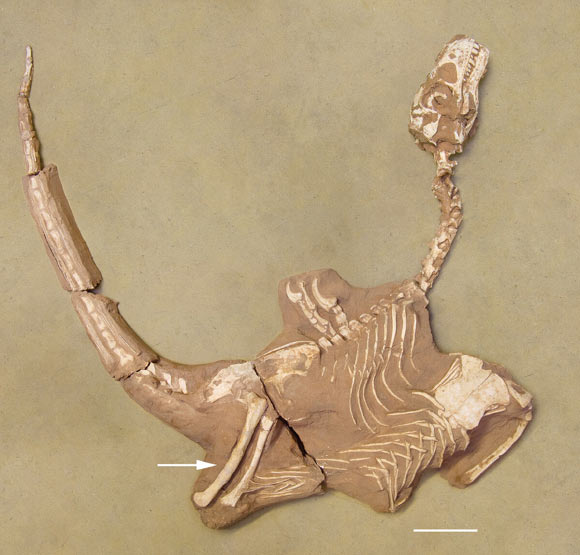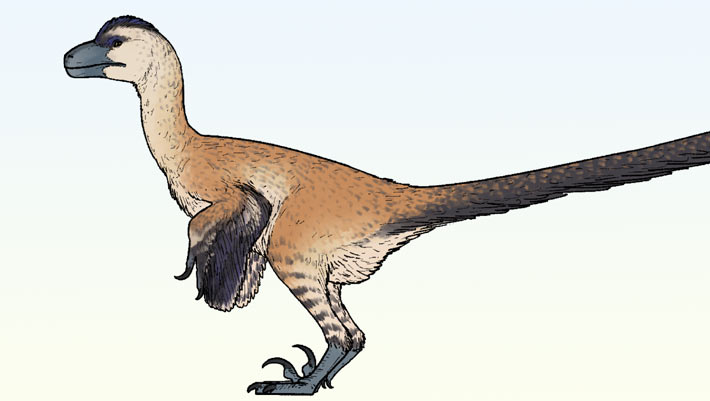Paleontologists have identified a new species of dromaeosaurid dinosaur from an almost complete and articulated skeleton found in the 2000s in Mongolia.
Life reconstruction of Shri rapax. Image credit: Connor Ashbridge / CC BY 4.0.
The newly-identified dinosaur roamed our planet during the Campanian age of the Cretaceous period, between 75 and 72 million years ago.
Based on several derived features in its skull, vertebrae and skeleton, the species is referrable to a group of bird-like theropod dinosaurs called the Dromaeosauridae.
Named Shri rapax, it is only the second species in its genus; the other species, Shri devi, was described in 2021.
“Dromaeosauridae is a clade of small- to medium-sized theropod dinosaurs known from several Cretaceous units from North America, Asia, Europe, South America and eventually Antarctica and Madagascar,” said lead author Andrea Cau and colleagues.
“Feather-like integumentary structures, true pennaceous feathers and remnants of the digestive tract are found in exceptionally-preserved dromaeosaurids from the Lower Cretaceous Jehol Biota of north-eastern China (e.g. Daurlong wangi, Sinornithosaurus millenii, Microraptor zhaoianus).”
“Along with troodontids, dromaeosaurids are universally considered as the closest relatives of birds among dinosaurs.”
An almost complete skeleton of Shri rapax was likely found in the Djadokhta Formation of Mongolia.
“This dromaeosaurid specimen was illegally poached before 2010, then retained in private collections in Japan and England before being acquired by the French company Eldonia,” the paleontologists said.
“The exact locality of the specimen is unknown.”
“Based on the documentation associated with the specimen, we tentatively refer it to Ukhaa Tolgod, Mongolia.”

Holotype of Shri rapax in 2010, before preparation at the Royal Belgian Institute of Natural Sciences; the arrow indicates the single femur reconstructed using elements from both femora (elements separated during preparation). Image credit: Moutrille et al., doi: 10.1080/08912963.2025.2530148.
Shri rapax had a peculiar combination of vertebral and pelvic features as well as exceptionally robust hands.
“The most unusual feature of Shri rapax is the exceptional robustness of the hand,” the researchers said.
“In particular, when scaled to the same length, all elements of the pollex are approximately 150% transversely more robust than the homologous elements in other Djadokhtan dromaeosaurids, and proportionally stouter than any other known dromaeosaurid.”
“We suggest that frequent interactions with the ceratopsians, combined with active antipredatory behavior by the latter, could had promoted the evolution of more robust forearms and stockier hands among some Djadokhtan velociraptorines.”
“If we assume that Shri rapax shared the predatory behavior of its close relative Velociraptor mongoliensis, the more robust proportions of its hands imply that it was better adapted to target larger and more robust prey than those usually preyed on by Velociraptor.”
A paper describing the discovery was published online July 13, 2025 in the journal Historical Biology.
_____
Léa Moutrille et al. A new bird-like dinosaur from the Upper Cretaceous of Mongolia with extremely robust hands supports niche partitioning among velociraptorines. Historical Biology, published online July 13, 2025; doi: 10.1080/08912963.2025.2530148
